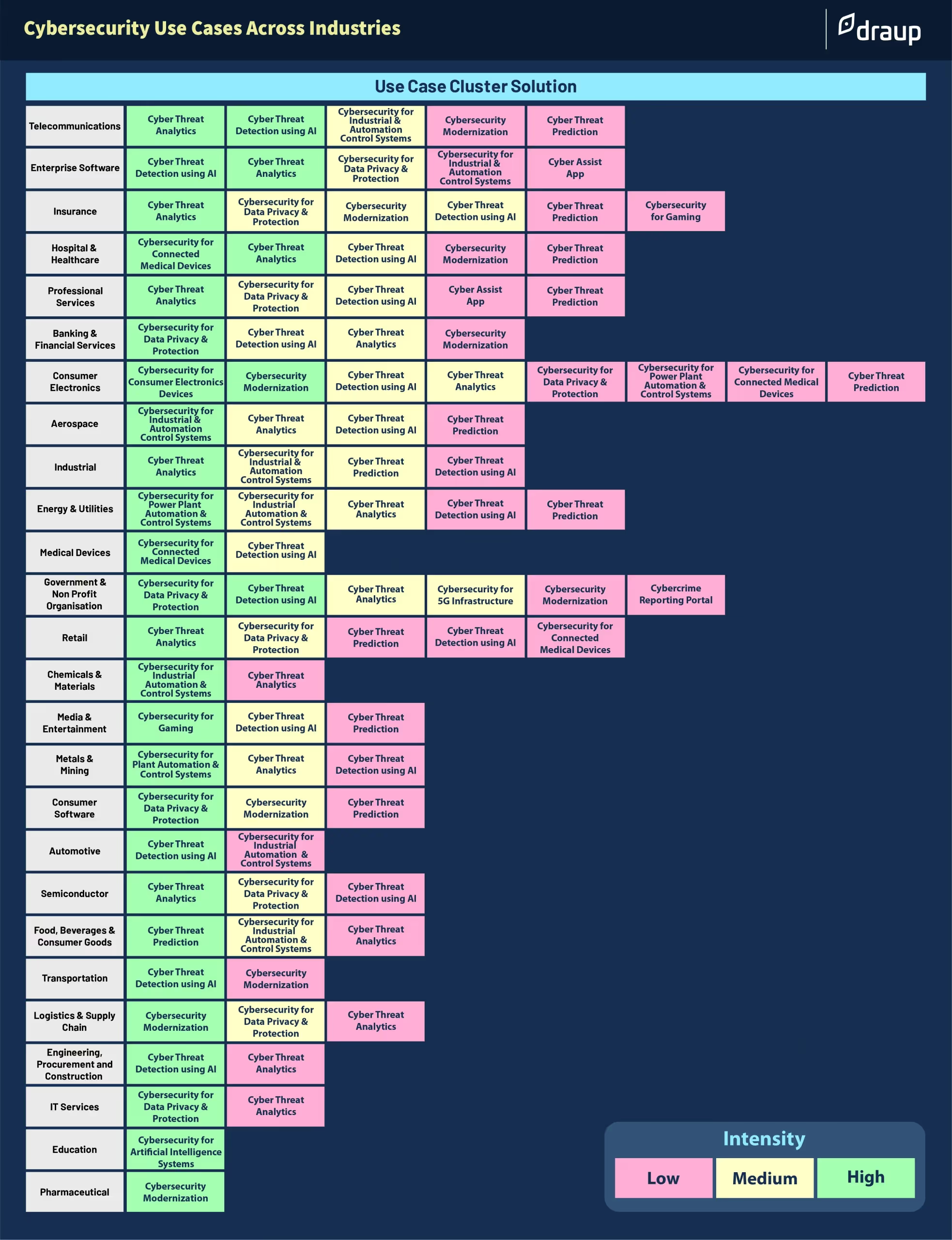Securing the Digital Frontier: An Analysis of Cybersecurity Landscape and Trends
The digital realm, encompassing data networks, cloud computing, Internet of Things (IoT) devices, and critical infrastructure, has expanded the attack surface for malicious actors.
- The global average cost of data breaches in 2023 stands at US$ 4.45 Mn, a 15% increase in the last 3 years.
- The average cost of a breach where remote work was a factor was almost US$ 1 Mn.
As organizations, governments, and individuals alike grapple with the escalating complexity of cyber threats, they are compelled to invest in advanced technological defenses and cultivate a workforce equipped with the requisite skills and knowledge to combat these threats.
Trends Impacting Cybersecurity
Companies can minimize future disruptions by taking a more proactive and forward-thinking approach. We anticipate these three significant cybersecurity trends over the next three to five years.
1. Increasing access to ubiquitous data and information platforms
Forecasts indicate the web-hosting service market will reach US$ 183.18 Bn by 2026. Organizations amass extensive customer data for insights into purchasing behavior and improved demand forecasting.
With the growing significance of cloud technology, businesses are accountable for securing and managing these data troves, amidst explosive volume growth.
To support these endeavors, businesses require new tech infrastructures, such as data lakes capable of aggregating information from various sources, like vendor and partner assets.
Notably, companies are centralizing data storage on the cloud and broadening access to numerous parties, including external entities like suppliers.
2. Hackers leverage AI, machine learning, and tech for advanced attacks
Cyberhacking is a billion-dollar industry with structured hierarchies and significant R&D budgets. Attackers deploy advanced tools including AI, machine learning, and automation.
Over the coming years, they will streamline the end-to-end attack process, reducing the timeline from weeks to hours.
For instance, Emotet, a sophisticated banking malware, adopted AI and machine learning in 2020 to enhance its impact. Using automation, it dispatched contextualized phishing emails, even co-opting other email threats related to COVID-19 communications.
Innovations and capabilities are amplifying established attack methods like ransomware and phishing. Ransomware-as-a-service and cryptocurrencies have slashed the costs of ransomware attacks, which have doubled annually since 2019.
Various disruptions often lead to a surge in these attacks. Amid the initial COVID-19 wave, global ransomware attacks spiked by 148%, and phishing attacks rose by 510% between January and February 2020.
3. Increasing regulations and resource gaps will outpace cybersecurity
Numerous organizations lack sufficient cybersecurity expertise, and this shortage is expanding. Broadly, the management of cyber risk has lagged behind the rapid growth of digital transformations and analytics.
Many companies are uncertain about identifying and handling digital risks.
Additionally, regulators are intensifying their oversight of corporate cybersecurity, often applying a level of scrutiny like credit and liquidity risks in financial services or operational and physical security risks in critical infrastructure.
Meanwhile, companies are confronted with stricter compliance requirements due to heightened privacy concerns and well-publicized breaches. Close to 100 regulations concerning cross-border data flow now exist.
Cybersecurity teams are dealing with added data and reporting obligations stemming from the White House Executive Order on Improving the Nation’s Cybersecurity.
Furthermore, the rise of mobile-phone operating systems prompts users to specify their preferences for data usage in each application.
Industry Overview and Market Use Cases
Modern cybersecurity can be traced back to the early days of computing when the first instances of cyber threats emerged as pranks and experiments.
Over time, the landscape has evolved from sporadic attacks to an organized underground economy driven by financial gain, political motives, and espionage.
With the rise of the internet and interconnected systems, cyber-attacks transitioned from isolated incidents to global concerns that can disrupt critical infrastructure, steal sensitive data, and compromise personal privacy.
In the current digital age, the ubiquity of technology and the proliferation of interconnected devices have magnified the potential impact of cyber-attacks.
Cybersecurity has transcended its role as a technical discipline to become a strategic imperative for businesses, governments, and individuals alike.
Breaches and attacks have far-reaching consequences, affecting not only financial stability but also eroding trust and damaging reputation.
The demand for cybersecurity solutions and expertise has surged in response to the escalating frequency and complexity of cyber attacks.
The cybersecurity market has experienced substantial growth, encompassing a wide array of products and services, ranging from advanced threat detection tools to compliance consulting.
Industries across the spectrum recognize the necessity of investing in cybersecurity measures to safeguard their digital assets.
Let us look at a few use cases across industries.

Shaping the Future
Cyber dangers become complex and prevalent as technology progresses. Hence, the cybersecurity ecosystem must continue to evolve and expand.
To effectively counter these threats, the cybersecurity community must encourage collaboration, innovation, and knowledge sharing across stakeholders from government, industry, academia, and civil society.
This collective effort is critical for building effective defense systems, staying ahead of emerging threats, and maintaining our interconnected world’s resilience.
The expansion of the cybersecurity ecosystem is not only a must; it is a requirement for a secure and digitally driven future.
Draup’s sales intelligence platform combines intent data with B2B data sources. This enables sales teams to develop targeted campaigns, identify high-value prospects, and optimize sales and marketing efforts for increased ROI and revenue growth.
Draup analyzed the cybersecurity ecosystem. The report provides information on the industry ecosystem, cybersecurity footprint, processes, skills and competencies, vendor and outsourcing analysis, overview, and use cases across industries.









.svg)

.svg)
.svg)
.svg)
















.svg)





.svg)
